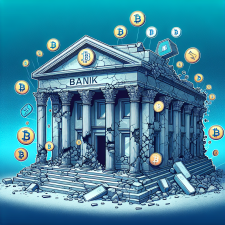Seen primarily as virtual investment tools or payment methods, cryptocurrencies have a multitude of uses. Each person or organization might label or categorize them differently, yet terms like governance, utility, transactional, security, platform, and non-fungible are most frequently encountered.
The utility of cryptocurrencies is expansive, seemingly encompassing a wide range of applications.
Many uses for cryptocurrency demonstrate its effectiveness, with numerous versions designed to fulfill diverse roles. It is gaining adoption globally as a form of payment, investment, and a method for democratizing organizations. Additionally, it is incorporated into financial services for those lacking traditional access.
Amidst various narratives found online, in news media, social platforms, and other channels, the notion that cryptocurrency is escalating in popularity due to its solutions to traditional system challenges is emerging.
Shopping and Purchases
Retail shopping is a frequently cited application for cryptocurrency. Known widely, companies like Microsoft, The Home Depot, and Newegg accept select cryptocurrencies. Much of the retail action occurs beyond the U.S. From July 2022 through July 2023, close to 60% of crypto value transfers happened through decentralized exchanges, primarily directed towards global retailers. North America leads in decentralized finance adoption, followed by central, northern, and western Europe.
Token Governance
To steer evolution, organizations issue governance tokens, empowering users with involvement rights. Owning or mining such a token can grant voting capabilities for blockchain enhancement decisions.
A decentralized organization often utilizes governance tokens, where token-holders are engaged in decision-making. Proposals are made available for scrutiny, triggering voting through blockchain interfaces. Token-holders cast their votes, enabling smart contracts to effectuate decisions. Absent smart contracts necessitate responsible parties to execute changes.
Such mechanisms could find use in elections at local, county, state, and federal levels. Exclusive voting tokens could democratize electoral participation, with the blockchain ensuring transparency. Unauthorized votes would be conspicuously evident since the blockchain’s integrity would reflect any tampering.
Blockchain and Cryptocurrency Systems
While speculative activity and investment loom large as predominant use cases for crypto, it also holds promise in making transactions economically viable under ideal conditions. Blockchain technology is frequently heralded as swifter than current systems, though by 2023, speed remains inconsistent. Developers are tackling these lag issues actively.
Platforms have emerged facilitating smart contract-based peer-to-peer lending.
Transaction Costs
From June to December 2021, Bitcoin’s transaction fees fluctuated notably but fell during some periods. However, from November through December 2023, fees saw an increase, leaving the potential for future decreases uncertain.
Although other cryptocurrencies typically feature lower fees, their transaction volume and blockchain operations might explain this. Bitcoin, a competitive platform for mining rewards and transaction processing, places transactions in queues prioritized by user-offered fees. Ethereum circumvents this process, resulting in reduced average costs, while Bitcoin Cash presents even lower fee averages.
Quick Statistics
Reports indicate that from July 2022 through July 2023, approximately 60% of cryptocurrency value was transacted via decentralized exchanges. North America leads in decentralized finance, followed by Europe. The volatile transaction fees of Bitcoin highlight the ongoing evolution in fee structures across different cryptocurrencies.
Whether blockchain and cryptocurrency systems will supplant traditional finance, integrate, or coexist remains speculative. Nonetheless, blockchain emerges as a potential cost-reduction tool for monetary transfers.
Security Tokens
Unlike many exchange-listed cryptocurrencies, security tokens signify business ownership or interest. Typically, enterprises distribute them seeking capital, offering returns, tokens, or company stakes in return.
Securities, as classified by the Securities and Exchange Commission, include such tokens, mandating registration. The 2017 initial coin offering (ICO) boom witnessed numerous security token releases aimed at fundraising for ventures. Many such offerings were mired in scams more than bona fide initiatives.
Value Preservation
Cryptocurrency’s relatively nascent status makes it prone to dramatic fluctuations influenced by investor sentiment, current events, regulatory updates, and more. Critics may label it a passing fad, yet opinions diverge. While some lost heavily investing in crypto, others gained, rendering its value retention an unsettled debate.
Historically, precious metals or government-backed securities served as traditional value repositories. However, investors increasingly turn to cryptocurrency to preserve portfolio value amid downturns. Given cryptocurrencies’ newness, their future response to market volatility remains indeterminate.
Crypto as a Wealth Storage
As a form of investment, cryptocurrency is immensely popular. It functions as an asset for wealth retention and growth. Advocates suggest it mirrors a hedge against fiat currency inflation due to its market value. However, crypto does not inherently shield against declining purchasing power.
Innovative NFTs
Representing assets, non-fungible tokens (NFTs) serve as blockchain tokens for trading, holding, or converting to fiat. Though held as tokens on the blockchain, associated assets are stored externally. This distinction often confuses, yet understanding tokens as identifiers linked to assets clarifies it.
For instance, an automobile’s VIN is a token linked to ownership, akin to an NFT. The physical car, like an NFT’s corresponding asset, isn’t stored on a blockchain, but its unique VIN or token resides digitally.
Distinguished from standard cryptocurrencies, NFTs are considered tokenized assets. These tokens, though separate from their assets, can be bought, sold, or used to store value. This system may perplex, but envisioning NFTs as identifying tokens associated with real or digital assets demystifies it.
For instance, a VIN represents a token assigned to a car within databases like the manufacturer’s or a DMV’s, signifying ownership. Non-fungibility implies exclusivity to a particular car, while the asset—a car—remains physically stored elsewhere, akin to an NFT.
Popularly perceived, an NFT often signifies a digital asset like an image on an NFT exchange. However, the NFT is the blockchain-stored token, not the visible image. While the image may be right-clicked and saved, ownership remains with its creator or purchaser, merely granting possession of a copy.
Cautionary Note
What makes cryptocurrency beneficial? It seemingly addresses myriad financial issues, yet like any solution, it’s vulnerable to misuse by unscrupulous individuals. Cryptocurrencies are no exception to this universal truth.
For informational purposes solely, comments, analyses, and opinions featured online should be read with care.







